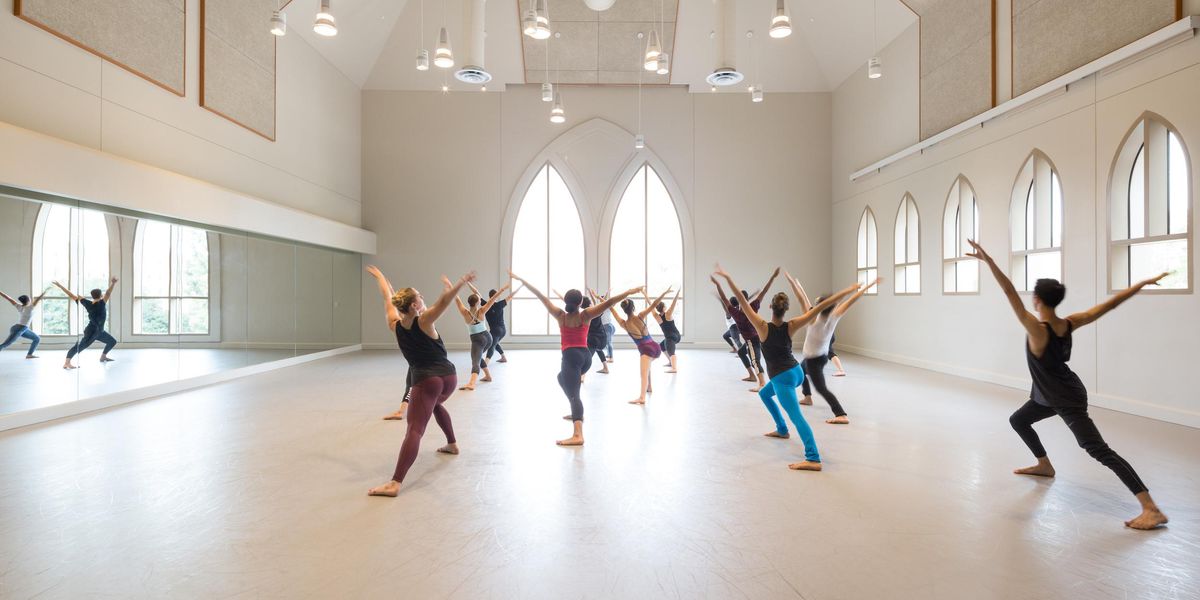Teacher's Wisdom
Debbie Allen is a human vortex. Perhaps best known for appearing in the 1980 movie and television show Fame, and choreographing the latter, she is always on the run. In addition to traveling the world as the United States ambassador for cultural affairs, she directs for television, writes/directs/produces musicals, writes children’s books, and teaches at the Debbie Allen Dance Academy in Los Angeles. She has won two Emmys and a Golden Globe, and has a star on the Hollywood Walk of Fame.
The day Jennifer Edwards interviewed her for Dance Magazine, Allen wore large red glasses that matched her platform shoes, and a bindi on her forehead—an influence from her recent trip to India.
What techniques do you need to become a successful commercial dancer?
In the world today, you need ballet, hip hop, and I would say tap. You need that ballet base so that you have command of your legs and arms to do triple turns and layouts.
What do you say to students who don’t want to take ballet and only want to take jazz?
There is no jazz dance without ballet! And also without African dance. If you can do ballet and African dance, you can do anything. You also have stamina and you have grace. You can be fluid and lyrical, and you can be sharp and cutting. Ballet is always going to be the most important of techniques for any dancer.
Even your youngest students have great technique. How do you achieve this? I treat them like professionals. They are expected to be on time, to be quiet, and focus on the work at hand. The little ones are amazing. They are like sponges soaking it all up.
What do you personally like to teach?
I’ve really been enjoying my musical theater class because there are so many dancers who are too shy to speak or sing. For my first Broadway show, I was hired as a dancer but I got to be the understudy for the lead by saying “yes” I could sing and “yes” I could act. I took voice lessons twice a week for six months. I enjoy the musical theater classes because we find so much expression and so much confidence. I’m able to help them explore their other dimensions, and it’s always fun when you’re in the process of discovery.
Who are your role models and mentors?
The greatest role model is Katherine Dunham, the mother of jazz dance. A real pioneer, a woman with her own dance company, and an international celebrity. She is also an author of more than 10 books.
How important is it to be a triple threat?
Your versatility is your ability to work. I’ve never been without a job, knock on wood [she does], because I do so many different things. The more you do, the greater your vocabulary is, and the broader your dream can be.
How do you recommend a dancer prepare for an audition? You better warm up, that’s for sure! During the audition process, you have to find a way to stay focused. You have to be prepared, and know that it can be a really long process or even one that’s too short [she laughs], so you’d better put your best foot forward right from the start. And be prepared to do anything that is asked.
What are the biggest mistakes a dancer can make?
It’s not so much about mistakes as it is about preparedness and ability. There is a certain look, for example. If you have a ballet audition, there is a certain look. A hip hop audition, there is a certain look. If it’s jazz…maybe there is a certain eccentric look, whatever. Also, the pace at which you learn can be an asset or a hindrance. You can be very talented but take too much time. Choreographers don’t “take time.”
Are there any tricks to help students progress more quickly?
You can come out and do a wonderful competition move that may look exciting but that doesn’t tell us if you can dance. Most competition dancers can get away with “tricks,” but I realized when working with these kids that once I moved them out of their routine, their safety zone, they were lost. They didn’t have proper technique. So I don’t believe that there are or should be “tricks.” They don’t work in the professional world.
Where do you draw the line between pushing a student to work harder and keeping a dancer safe?
I think the only time safety becomes an issue is when I have students flying around doing the Cirque du Soleil techniques. Then it’s really a hazard. But otherwise, no. You need to work hard. You need to know what it is to sweat. Stamina is your power. It’s like on the basketball court. The players run up and down and up and down and they are judged by how quickly they recover. They have maybe 10 seconds to shoot some free throws, then they’ve got to go again. My daughter is dancing with Ailey II, and they rehearse six hours every day. So you keep working, but you need to know when it is time to rest. You can’t party all night.
Is there ever a point at which you look at dancers and know that their dream just won�t happen? Do you let them know? Do you encourage them in another direction?
No, I never let them know! It’s rare, but I have seen a few who don’t seem to be getting anywhere. But I just keep trying. If they have it in their hearts that they want to, I think they should keep trying.




